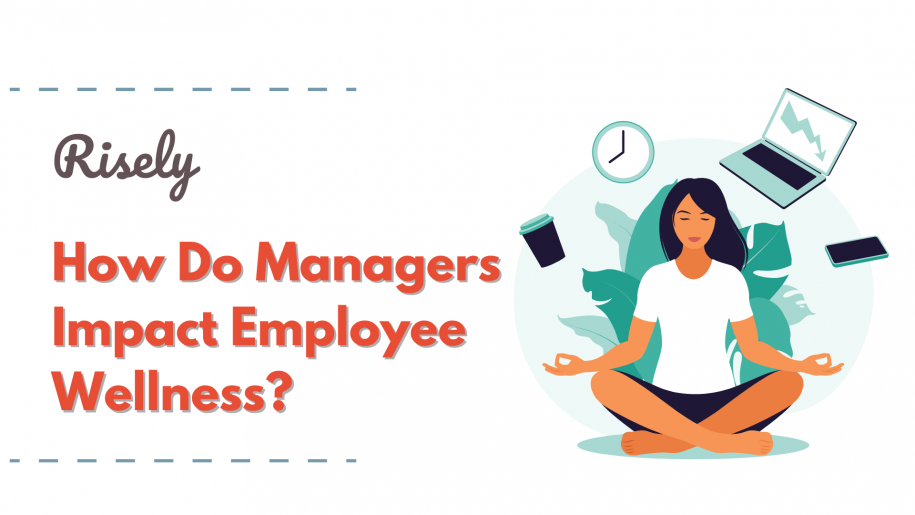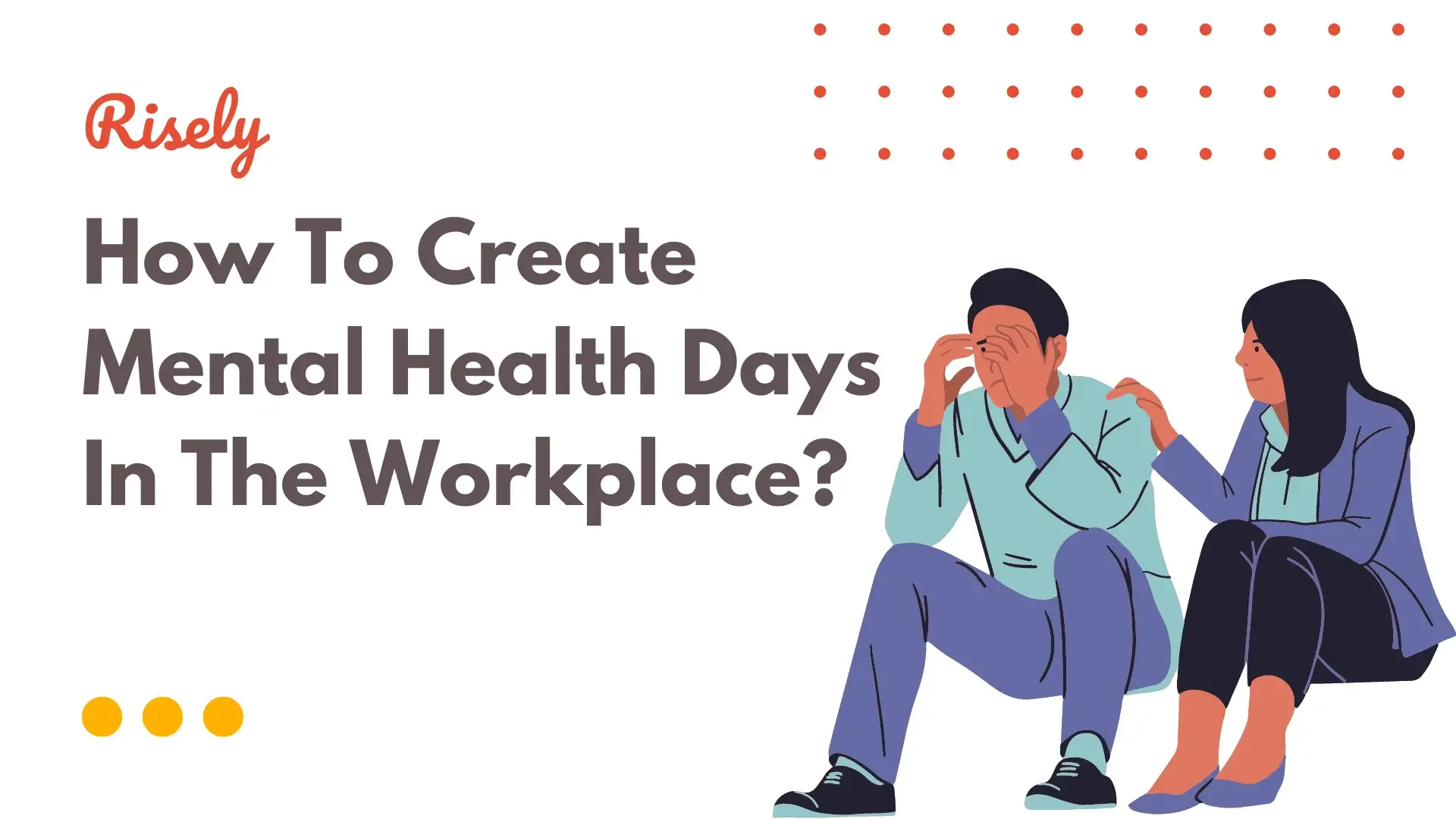How Do Managers Impact Employee Wellness?
The well-being of employees not only impacts their personal lives but also their performance and productivity at work. While there are numerous factors that contribute to employee wellness, one key factor is the role of managers. Managers have a significant impact on employee wellness, as they have the power to create a work environment that promotes mental health, work-life balance, and overall well-being. In this blog, we will explore the ways in which managers impact employee wellness and discuss strategies that managers can implement to support their employees’ well-being.What is your role in employee wellness?
You play a crucial role in promoting employee wellness. Your leadership style, approach to work-life balance, and ability to manage stress levels can significantly impact the well-being of your team members. A manager who prioritizes their employees’ mental health and work-life balance creates a supportive work environment that fosters overall well-being. On the other hand, a manager who neglects these aspects contributes to increased stress levels and decreased job satisfaction among their team members.The Connection Between Management Practices and Employee Health
Management practices have a direct impact on employee health. When you prioritize employee well-being and create a supportive work environment, it can result in improved mental health, physical health, and overall well-being. On the other hand, when managers neglect the well-being of their employees, it leads to mental health issues such as stress, anxiety, and burnout. Chronic stress, often caused by poor management practices, can have detrimental effects on both mental and physical health.How Leadership Styles Affect Stress Levels and Job Satisfaction?
Research suggests that different leadership styles can affect stress levels and job satisfaction among employees. An autocratic or micromanaging leadership style can increase workplace stress, as employees may feel overwhelmed and lack control over their work. On the other hand, a transformational or participative leadership style can contribute to lower stress levels and higher job satisfaction, as it promotes open communication, collaboration, and employee empowerment.Other Interesting Reads
Key Areas Where You Can Make a Difference
Managers have the power to make a difference in key areas that contribute to employee wellness. By prioritizing work-life balance, you can create an environment that gives employees enough time for their personal lives and free time. Additionally, you can promote physical health by encouraging employees to prioritize their well-being, such as taking breaks, practicing self-care, and engaging in physical activities. Furthermore, you can foster mental well-being by creating a supportive work environment that values open communication and provides resources for mental health support. Let’s look into each of these areas in detail:Promoting a Healthy Work-Life Balance
A healthy work-life balance is essential for employee wellness. You can promote a healthy work-life balance by:- Encouraging employees to set boundaries between work and personal life
- Supporting flexible working arrangements, such as remote work or flexible hours
- Ensuring employees have sufficient time for personal activities and hobbies outside of work
- Encouraging your employees to take breaks and utilize their vacation time effectively
Encouraging Physical Health and Mental Well-being
You can also play a significant role in encouraging physical health and mental well-being among their employees. Some strategies that managers can implement include:- Promoting regular physical activity and providing resources for exercise or wellness programs
- Encouraging employees to prioritize adequate rest and relaxation
- Providing opportunities for personal activities and hobbies outside of work
- Creating a supportive environment that values mental health and provides access to mental health resources
Strategies for Managers to Support Employee Wellness
You can support employee wellness by implementing strategies that prioritize their well-being. Some key strategies include:Implementing Flexible Working Arrangements
Flexible working arrangements significantly impact employee wellness. By offering options such as flex time or remote work, you empower employees to have more control over their time and work-life balance. Some benefits of implementing flexible working arrangements include:- Increased employee satisfaction and retention
- Improved work-life balance and reduced stress levels
- Increased productivity and employee engagement
- Enhanced recruitment and attraction of top talent
Creating a Supportive Work Environment
Creating a supportive work environment is essential for employee wellness. Managers play a crucial role in fostering a supportive environment by:- Building positive relationships with team members and promoting a sense of belonging
- Encouraging collaboration and teamwork to create a supportive community
- Providing opportunities for personal and professional growth
- Offering support and resources for employees to navigate challenges and conflicts
- By creating a supportive work environment, you can enhance employee well-being and job satisfaction, increasing productivity and success.
Fostering Open Communication and Feedback
Open communication and feedback are essential for employee wellness. You should create an environment that encourages open communication, where employees feel comfortable expressing their concerns, challenges, and ideas. By fostering open communication, you can:- Address any issues or conflicts in a timely and constructive manner
- Provide regular feedback and recognition to motivate and support employees
- Set clear boundaries and expectations to avoid any misunderstandings or excessive workload
- By prioritizing open communication and feedback, managers can create a positive work culture that promotes employee well-being and contributes to a healthier and more productive workplace.
Balancing Organizational Goals with Employee Health Needs
Balancing organizational goals with employee health needs can be a challenge for managers. The pressure to meet deadlines and achieve targets can lead to long hours and a lack of work-life balance for employees. However, managers need to balance meeting organizational goals and supporting employee well-being. By prioritizing work-life balance, setting realistic expectations, and providing support, managers can create an environment that allows employees to thrive personally and professionally.Addressing Resistance to Wellness Initiatives
Resistance to wellness initiatives can be a challenge for managers. Some employees may resist change or not see the value in wellness initiatives. To address this resistance, you can:- Communicate the benefits of wellness initiatives and emphasize their impact on employee well-being
- Involve employees in the decision-making process and incorporate their feedback into wellness programs
- Provide support and resources to encourage participation and engagement
- By addressing resistance and promoting participation in wellness initiatives, you can create a culture of well-being and improve employee wellness outcomes.
Conclusion
In conclusion, managers play a crucial role in shaping employee wellness. By fostering a supportive work environment, promoting work-life balance, and encouraging open communication, managers can significantly impact their employees’ physical and mental well-being. Implementing flexible working arrangements and addressing resistance to wellness initiatives are key strategies for enhancing employee wellness. Managers must prioritize employee health needs while aligning with organizational goals to create a harmonious and productive workplace.Are you listening to your team properly?
Master the art of active listening by reviewing your skills with a free assessment now.
Other Related Blogs
How To Create Mental Health Days In The Workplace
How To Create Mental Health Days In The Workplace? Mental health is certainly among the top topics in conversations in workplaces. Mental health days in workplaces are one such initiative…
Building Inclusive Workplaces: DEI Goals and How to Achieve Them
Building Inclusive Workplaces: DEI Goals and How to Achieve Them According to a LinkedIn study, 76% of job seekers mentioned diversity as a critical factor in evaluating potential workplaces. Yet, we…
Employee Benefits Survey: Complete Guide (17 Top Questions and Free Template)
Employee Benefits Survey: Complete Guide (17 Top Questions and Free Template) As an HR professional, understanding what motivates your employees is critical to creating a productive and happy workplace. Employee…
How to Handle Defensive Behavior in the Workplace? 7 Tips for Managers
How to Handle Defensive Behavior in the Workplace? 7 Tips for Managers All of us have experienced defensiveness at some point in our lives. Whether we’re feeling overwhelmed or insulted,…


